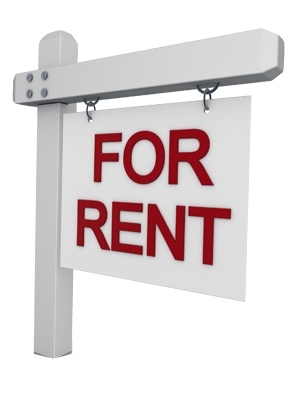
The report looks at how rents have changed over the past year and over a longer time.
Of greater interest, says Alexander is an update on the analysis of growth in new building consents and estimated population growth to get a feel for when people might decide a region is becoming “over-supplied”.
“The term is in quotation marks to reflect the fact that being over or under-supplied with dwellings is more a matter of opinion and popular sentiment than empirical facts.”
Northland – Strong rent growth
In Northland the median dwelling rent was below the national average in the year to July at $453 a week compared with $491 nationwide.
Northland rents in the past year have risen by 9% compared with 5.6% across all New Zealand.
This sharp jump means the gap between rents in Northland and the country as a whole is at its smallest since 2008.
Over the past five years Northland’s population has grown by about 19,500 people or 11%.
With an occupancy rate per household of 2.8 this growth in population requires an extra 7,800 houses, allowing an extra 10% for demolition of old houses.
Consents have only been issued for 5,600 in the five years ending mid-2020. Therefore, there is a fresh shortfall of about 2,100 dwellings or some 3.3% of the housing stock.
This may help explain the surge in rents.
Auckland – House supply surge suppressing rents
Over the past year the average weekly rent in Auckland has been $571, a rise of just 3% from the year before.
In fact the pace of growth in Auckland rents has been well below the New Zealand-wide average for five years.
A key reason for this is likely to be the rate of growth in new house supply in Auckland has been strong.
The long-term average ratio of consents issued to population in Auckland is 0.65%. The latest such ratio is 1.1%.
House building is booming in Auckland with construction exceeding that required for population growth.
However, Auckland experienced a period of weak construction from the mid-2000s and much of the recent surge can be best read as a catch-up.
It seems likely, with the construction surge over the past five years suppressing growth in rents, the continuation of this surge will suppress Auckland rental growth even further over the next three to five years.
With rental property owners losing the ability to deduct interest expenses from their rental income for tax purposes, yet interest rates rising, an interesting dynamic is being set up.
Rising costs, but rents not keeping up will likely produce some extra selling and a period of flattening in Auckland house prices.
Falls are unlikely as average prices are below their long-term trend versus the rest of the country.
Bay of Plenty – Firm rent growth may continue
The average rent in the Bay of Plenty region over the past year has been $513. This is just above the New Zealand average of $491 but the fourth highest in the country behind Auckland, Wellington and Queenstown.
What is interesting is that courtesy of the slow growth in Auckland rents in recent years, the Bay of Plenty average has begun to consistently exceed that for the country overall.
On average the ratio of consents issued to population in the Bay of Plenty region has been 0.68%. The ratio for the year to July was 0.74%.
Construction has lifted in the region, but it is not a boom.
In fact, when looking at just the past five years, the shortfall of construction as a percentage of the population is the equal greatest in the country alongside Hawke’s Bay.
On this basis, it would not be surprising if the recent surge in the pace of annual rental growth in the region to a high 7.9% is sustained in the near future.
Waikato – Superior rents growth may ease
In the Waikato region average rents have increased by an above average 6.4% over the past year to sit at $449 a week versus $491 for the country overall.
Waikato average rents have been consistently sitting just below the New Zealand average since at least 1995. It is not clear the recent period of growth above the countrywide average will continue.
To gauge that population growth can be compared with house supply growth.
Based on experience of the past five years, construction in the Waikato region has matched population growth and there is no shortfall or excess supply.
However, this situation may be changing. Consent numbers are running consistently well above average as a proportion of the population.
On this basis, a slowing in rents growth would seem to be a reasonable expectation.
Gisborne – Rents pressure remains upward
The Gisborne region is small but its data can be quite volatile. Keeping that in mind the following observations can be made.
The average rent in Gisborne has been $415 in the past year.
This is well below the New Zealand average of $491 and fourth lowest in the country ahead of West Coast, Southland and Manawatū-Whanganui.
The pace of growth in rents has been a strong 13.8% in the past year and, in fact, rental growth in the region has exceeded the countrywide average for almost four years.
This is an unusual situation. Will it continue? Maybe.
Based on building consents issued and population growth over the past five years there remains a shortfall of supply in the region.
How rapidly is this shortfall being addressed? Not very.
Consent issuance as a proportion of population has only just gone above the long-term average for the region. Rents look like continuing to rise at a firm pace.
Hawke’s Bay – Supply shortfall drives rents up
The average rent for properties newly let in Hawke’s Bay over the past year has been $466, which is below the New Zealand average. The rise for the past year has, however, been a strong 11.8% compared with 5.6% nationwide.
As is the case for neighbouring region Gisborne, there is a shortfall of property if we look just at the past five years’ worth of population growth and consent issuance.
However, unlike in Gisborne, there is a supply response underway which is strong.
For that reason, it seems reasonable to expect the pace of growth in Hawke’s Bay rents to start easing off fairly soon but not at a rapid clip given the period of above average construction is only just underway.
Manawatū-Whanganui – Rents low by NZ standards
The pace of growth in weekly rents for newly let properties has exceeded the New Zealand-wide rate of increase for five years in the Manawatū-Whanganui region.
Growth for the past year has been 13.6% compared with 5.6% nationwide.
But the gap with the rest of New Zealand is shrinking, with the latest averages being $399 a week for the region and $491 nationwide.
The Manawatū-Whanganui region is experiencing a period of above average house construction relative to population.
But the shortfall of construction versus population growth for the past five years is relatively small.
Taranaki – Supply surge may slow rents growth
In the Taranaki region average rents for newly let properties have risen by 10.5% over the past year compared with a 5.6% gain nationwide.
The average rent now sits at $406 a week compared with $491 countrywide.
The gap between the region’s average rents and the country as a whole has started to shrink a bit as a result of above average growth for the past couple of years.
For many of the other non-Auckland regions discussed earlier, the period of above national average rents growth has tended to be much longer than this at around five years.
So, Taranaki is lagging in terms of rents growth acceleration.
There is not much of a shortfall in supply based on relative developments in population and consent issuance over the past five years.
But construction is in above average territory to a substantial degree.
The supply surge suggests an easing in rents growth fairly soon.
Wellington – Rents growth likely to slow
The average rent in the Wellington region over the past year has been $543 a week compared with $491 nationwide.
This is the second highest weekly rent, just behind Auckland at $568.
Wellington rents have risen by 5.9% over the past year which about matches the 5.6% nationwide average increase.
There is no trend divergence underway in the average Wellington region rent compared with the countrywide average. Plus, a recent period of above average increase has all but ended.
Looking at the level of house building compared with population, activity has been above average since 2017 and it looks like this is more than making up for the weak construction over 2009-2016.
In fact the construction shortfall calculation being used shows the extent of the supply shortfall in Wellington is quite small.
A period of below average rents growth in Wellington may occur soon.
Nelson, Tasman, Marlborough – Mildly above average rents growth likely
In each of the three top South Island regions rents are at a similarly low level below New Zealand average levels, with highest rents in the Tasman region.
For Nelson and Tasman there has been a small catch-up to the national average recently.
Their rents growth rates this past year have been 5.8% and 8% respectively versus 5.6% nationwide, with Marlborough ahead 7.9% and tending to enjoy above average growth in recent years.
Supply shortfalls are near zero for all three regions.
In Nelson construction continues to run at below average levels, and Marlborough is similar. On this basis firm rental growth in both locations remains possible.
In Tasman, construction is only just exceeding average, and allowing for the absence of much of a shortfall, rents growth only slightly above average also looks possible.
West Coast – Rents growth probably to ease back
The average weekly rent on the West Coast is the lowest across all New Zealand regions at $301.
Over the past year rents on the Coast have risen by 8.2% compared with 5.6% countrywide.
The recent period of superior rents growth has been quite short-lived, and the underlying trend is towards a widening of the gap.
If anything there has been excess construction recently based on the change in population as compared with the level of population.
It would not seem reasonable to expect the recent period of slightly above average rents growth will run for long on the West Coast.
Having said that, there will be upward pressure on rents from the recent devastating floods in Westport rendering many houses no longer habitable.
Canterbury – Subdued rents growth to continue
Average rents in the Canterbury region have risen by a below average 4.6% over the past year to sit at $415 a week.
In fact, rents have been growing at a below average pace since 2015.
Compared with population growth over the past five years the growth in house supply has more than met new demand.
Construction has been at above average levels since 2013. Clearly, much of this can be put down to rebuilding after the early-2011 earthquake.
Nonetheless, 10 years down the track the existing situation of supply growth versus population demand suggests growth in rents will remain subdued.
Dunedin City – Average growth in prospect
Over the past year the rent on an average newly let residential property in Dunedin has been $407 a week. Rental growth of 5.4% is below the New Zealand average of 5.6%.
The pace of growth in rents has recently slowed appreciably.
There has been a shortfall of property based on population growth versus construction over the past five years, but it is quite small.
Things are running just above average in the levels of construction but Dunedin did not experience the well below average levels of building which many other regions did following the global financial crisis.
It is hard to make the case for rents growth in Dunedin to run much above or below the countrywide average in the next few years.
Queenstown Lakes – Rent rebound partly underway
Queenstown has clearly been hit hard by the closure of the country’s borders in March last year and for that reason it is difficult to extrapolate recent property market trends in the district.
Taking that into account, average rents at $531 a week in the past year were well above the New Zealand average.
Rents, however, fell by 10.6% versus a 5.6% gain nationwide.
The gap between average rents in the Queenstown Lakes District and the country overall blew out tremendously from 2016 as a worsening shortage of accommodation developed.
The gap has now almost gone.
Measuring the past three months on a year earlier there is already growth of 6.5% versus 7.5% nationwide. Recovery is underway but it is being contained by the continuing border closure.
For the region, the shortfall of house supply growth versus population change in the past five years is the biggest of all regions.
It would seem reasonable to expect a fairly robust jump in rents once the foreign tourists return and demand for staff accommodation recovers.
Southland – Strong rents growth recently
In Southland, rents are the second lowest in the country, sitting at an average this past year of $338.
The rents gap with the rest of the country remains big, and no true shrinking trend is underway.
With regard to house supply growth, there is only a small shortage of property in place when looking at the past five years’ worth of population growth versus construction.
The level of construction activity is slightly above average after only a brief period of below average building. The weakness from 2013 to 2017 is quite small compared with many other regions post-GFC.
The issue will be the extent to which construction stays above average beyond the next year or two. The risk is that supply growth will lead to a retreating of Southland average rents growth back towards the New Zealand average within a couple of years.
But for now, excess growth still seems a prospect.



